You’re about to learn what I believe is the best method for cooking spaghetti squash-one that yields long, beautiful strands and firmer texture without all the mushy, watery fails so many home cooks struggle with.
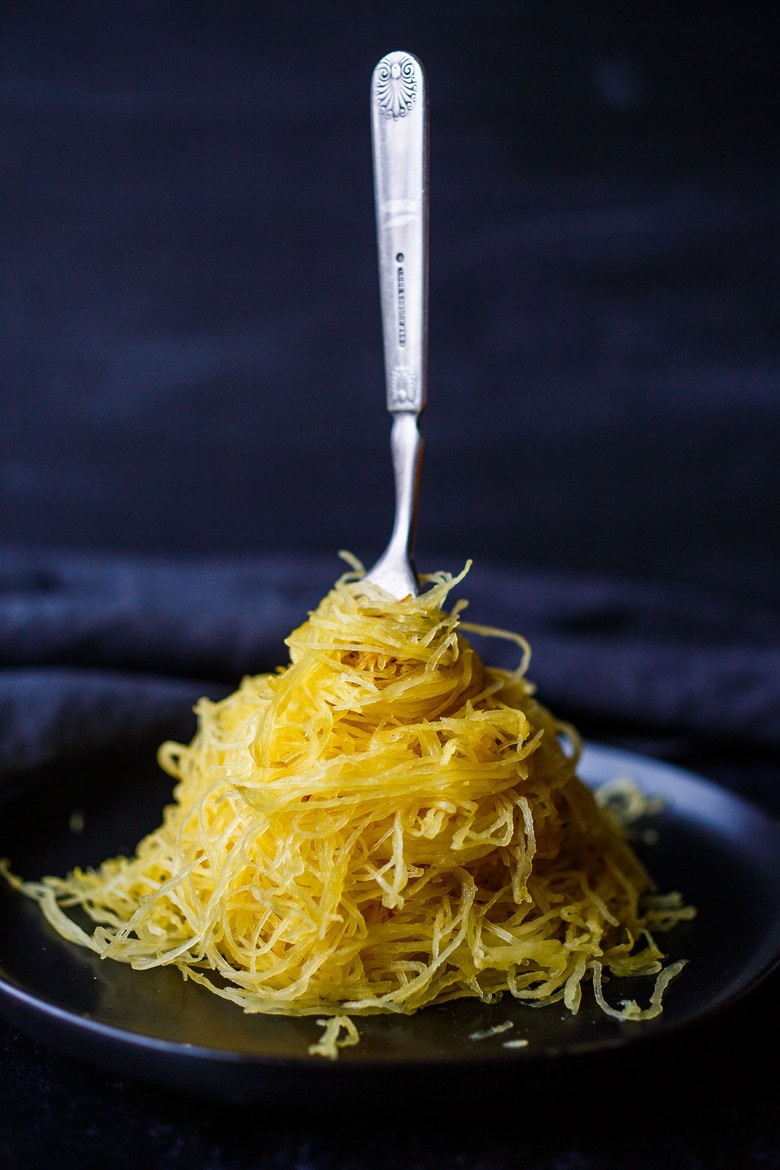
I am certain of nothing but the holiness of the heart’s affections, and the truth of imagination. ~John Keats
Our chef-tested technique delivers the BEST texture in the shortest amount of time. A perfect low-carb substitute for pasta or a simple side dish. Versatile, highly nutritious, and easy to cook!
In the winter squash world, spaghetti squash is in a class of its own. It is actually a gourd with a shell that is quite hard, and though not toxic, you really don’t want to eat the rough fibrous peel. The inside of the spaghetti squash is where the magic happens. When cooked, the interior turns into thin, ribbony strands of spaghetti. Hence, the name.
The Secret to Perfect Spaghetti Squash Every Time
Most recipes for spaghetti squash have you slice the squash lengthwise (across the grain) and roast it face down, only to end up with soggy short strands. I used to do that too, until I discovered a better way: cutting into round rings with the grain, roasting flat, and flipping mid-bake to let excess moisture escape. This method intentionally prevents sogginess and delivers results you’ll love every time. No more disappointing squash that falls apart. This is how to make spaghetti squash with the BEST texture.
- How to cut spaghetti squash: My friend Alli showed me this amazing technique for roasting spaghetti squash. Rather than slicing the whole squash in half lengthwise, it is much easier to cut into rings width-wise. The cool thing about spaghetti squash is that the strands grow circular width-wise in the spaghetti squash. When you cut a spaghetti squash with the grain versus across the grain, you’ll get longer, spaghetti-like strands.
- How to roast spaghetti squash: Another common mistake is roasting them open side down. This steams them, which traps the moisture inside and results in watery, mushy strands. Roasting them using our method results in the best texture, with a drier finish. No more mushy, watery spaghetti squash!
Why you’ll love this Way to Cook Spaghetti Squash
- Cutting in widthwise rings results in long spaghetti-like strands vs. short choppy strands.
- Faster cooking time! Cooks in 30 minutes.
- Better texture. Roasting them this way reduces the excess moisture and gives the spaghetti squash a more roasted flavor and lovely texture!
Spaghetti Squash Recipe Ingredients
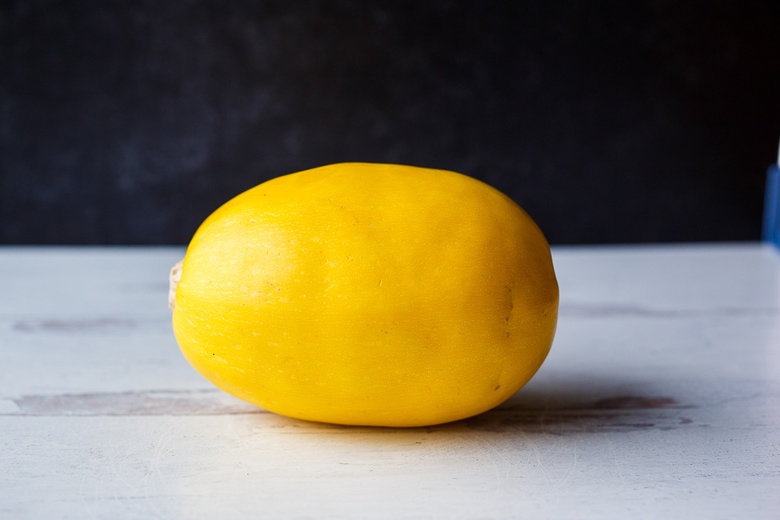
- Spaghetti squash: For best results, pick one that is firm and heavy.
- Olive oil: For brushing, or use a spray olive oil. For best results, use a high-quality Italian extra virgin olive oil.
- Salt & pepper: For bringing out the natural flavor of the spaghetti squash. I prefer to use Redmond Real Salt and freshly ground black pepper.
How to Roast Spaghetti Squash
1. Prep the squash. Preheat oven to 400°F. On a flat surface with a non-slip cutting board, lay the squash on its side and cut it into 1-inch widthwise slices with a sharp knife.
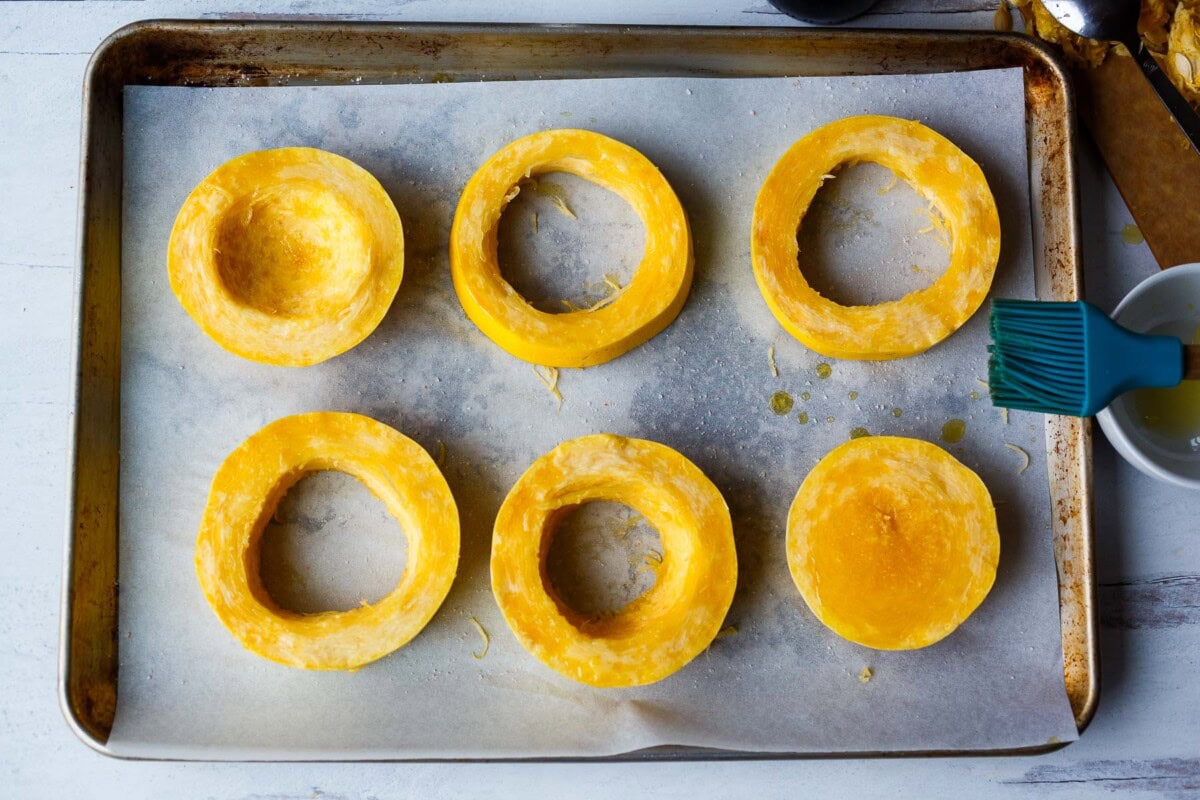
2. Scoop out the seeds. Scoop out the seeds and loose inner strands with a spoon; a serrated grapefruit spoon works great here. The seeds are edible and can be cleaned and roasted-we love this recipe for maple-roasted pumpkin seeds!
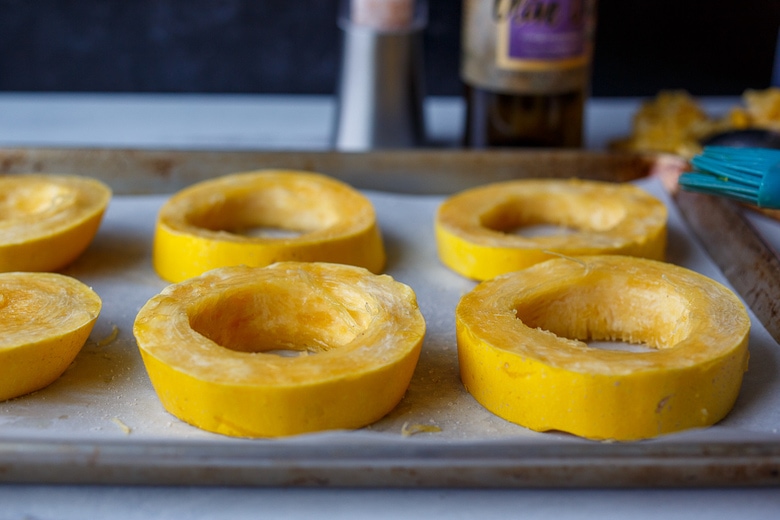
3. Season the squash: Brush or spray both sides of the squash rings with olive oil and sprinkle with salt and pepper. Lay out on a baking sheet lined with parchment paper.
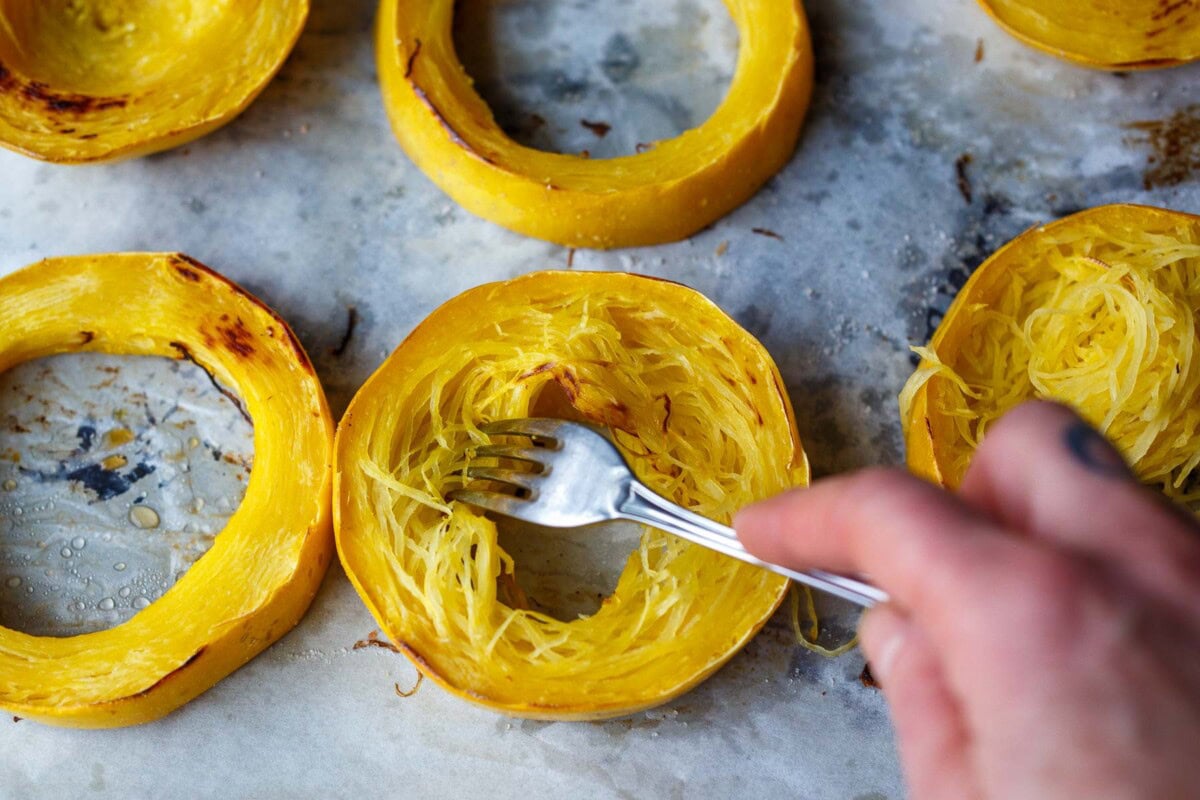
4. Bake: Place the spaghetti squash in the oven and bake for 15 minutes. Flip the squash rings over and bake for 15 minutes more. Fast!
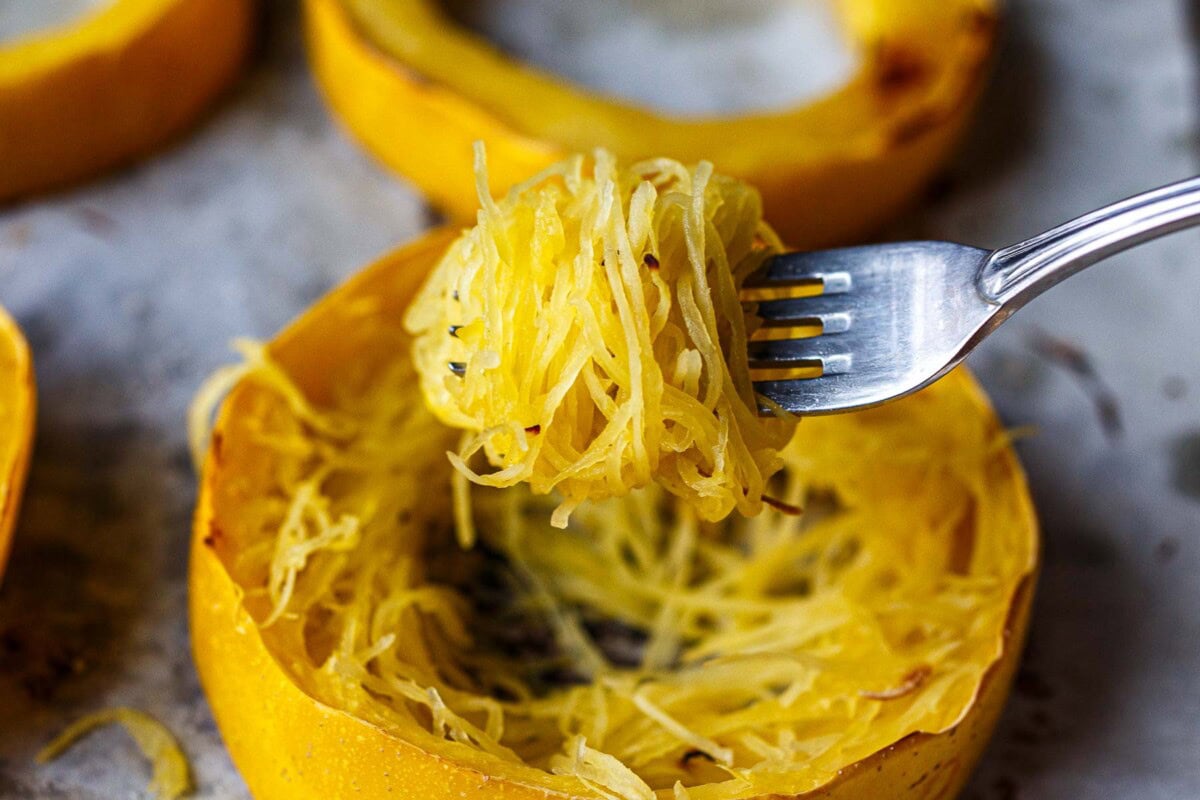
5. Fluff: While still on the tray, pull apart the squash with a fork, separating the strands from the peel. Look how fluffy the texture is! Caramelized perfection. The spaghetti squash is now ready to eat and use in recipes.
Chef’s Tricks & Tips
- Choose the right squash. For best results, find a firm, heavy spaghetti squash with matte skin (not glossy). A shiny shell can indicate the squash was picked too early and may have less flavor and moisture. Smaller squashes, about 2-3 pounds, cook more evenly and have sweeter strands.
- If your knife is not wanting to go through the shell, make a few small incisions with a paring knife in a circle around the exterior of the squash shell, then with a chef’s knife follow the knife nicks. This will make it easier to break through the shell and cut a straight line.
- Cut with the grain for long strands. The secret to long, spaghetti-like ribbons is slicing the squash into rings widthwise (not lengthwise). The fibers inside run horizontally, so cutting across them shortens the strands. Cutting with the grain preserves their full length and yields beautiful, noodle-like texture.
- Don’t steam. Roast! Many recipes suggest roasting cut-side down, but this traps steam and results in soggy strands. Instead, roast the rings flat on a baking sheet. This allows excess moisture to evaporate and creates a lightly caramelized, nutty flavor.
- Season early. Lightly brush or spray both sides of each ring with olive oil and season with salt before baking. Early seasoning draws out moisture and allows the salt to penetrate, enhancing the natural sweetness of the squash.
- Test for doneness. Cooking time will vary depending on the size and thickness of the rings. When done, the strands should pull apart easily with a fork but still feel slightly al dente.
- Let rest before fluffing. Let the rings rest for 5-10 minutes. This cooling period helps the strands firm up and separate cleanly from the peel, reducing the risk of breaking or becoming watery.
- Fluff gently. Avoid scraping aggressively or mashing. Lightly separate the strands from the peel using a fork.
- Repurpose the seeds! Use them in our recipe for maple-roasted pumpkin seeds for a delicious snack!
Troubleshooting Spaghetti Squash
- My spaghetti squash turned out mushy. If the spaghetti squash is watery after roasting, spread the strands on a parchment-lined baking sheet and roast for 5 minutes. This quick fix evaporates moisture.
- The strands are still hard and crunchy. Cooking time varies based on the size of your squash. Undercooked squash just needs a little more oven time. If the strands are firm, return the squash to the oven for 5-10 minutes.
- I can’t cut through the squash. Try scoring the skin with a paring knife first, then slice along those marks with a larger chef’s knife.
- The strands clump together. This means a bit too much moisture remained. Let the rings cool on the pan to allow steam to release. This helps the texture firm up before fluffing with a fork.
- It tastes bland. Spaghetti squash has a very mild flavor. Salt helps bring it to life, but a drizzle of olive oil, a little butter and maple syrup, or a spoonful of sauce (like pesto or tomato sauce) makes all the difference.
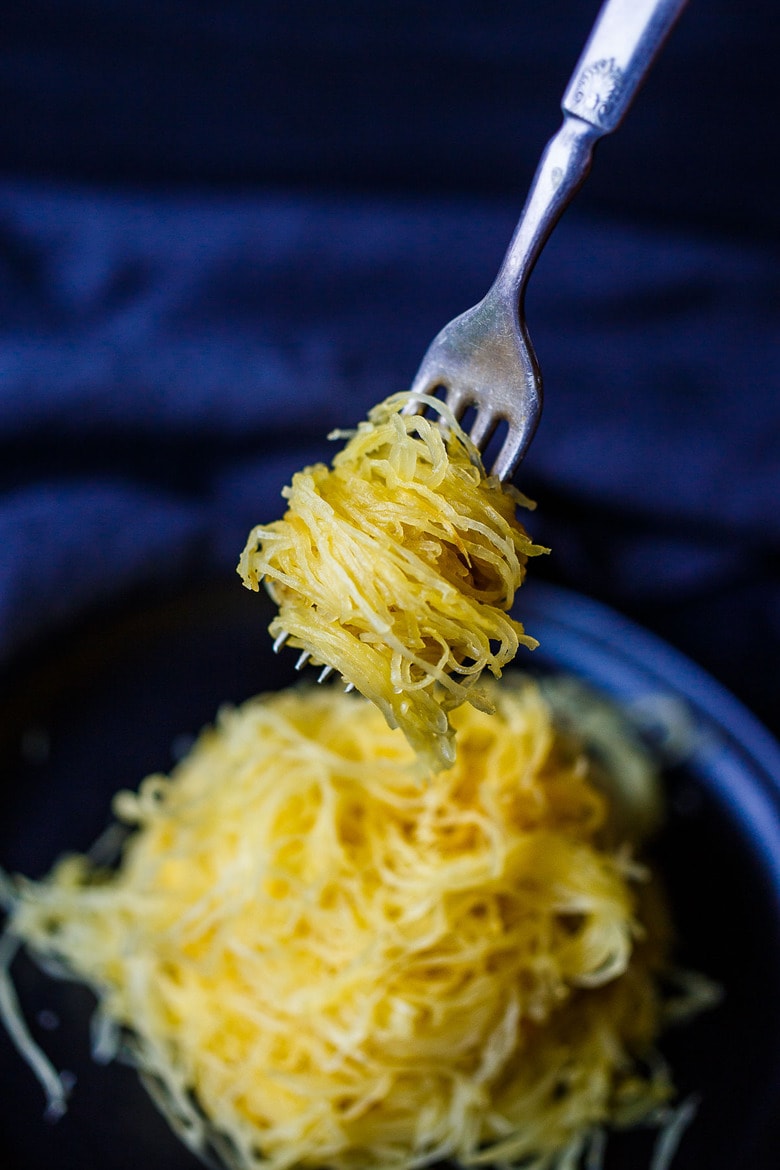
Storing Spaghetti Squash
Roasted spaghetti squash can be stored in an airtight container in the fridge for 4 days. To avoid trapping steam, be sure to let the squash cool completely before storing
To reheat, instead of using the microwave, reheat gently in a skillet over medium heat with a drizzle of olive oil or butter. This revives the roasted texture and prevents excess moisture.
Can you freeze spaghetti squash?
Yes, it freezes well. Allow to cool completely and freeze in an airtight container for up to 6 months.
How to Meal Prep Spaghetti Squash
Roast two squashes at once and freeze one batch of noodles! The spaghetti squash thaws quickly and can be tossed straight into sauces, stir-fries, or curries-no need to start from scratch.
Ways to serve spaghetti squash
From savory to sweet, spaghetti squash is adaptable! It goes great with Italian, Greek, and Indian dishes. Substitute in your favorite pasta recipe. Try it with:
- Butter, salt, and maple syrup
- Simple Oven-Roasted Tomato Sauce
- Fresh Basil Pesto (Nut-Free)
- Poblano Pumpkin Seed Sauce
- Preserved Lemon Gremolata
- Roasted Vegetable Pasta
- Sautéed Zucchini
- Lemon Pasta or Lemon Butter Sauce
- Pan Sauce
- Shrimp Scampi
FAQs
It will not harm you, though it is not recommended, as the texture is rough, brittle, and not appetizing.
Spaghetti squash is very adaptable. The neutral taste takes on spices and a variety of flavors, pairing well with many ethnic seasonings. You can flavor it much like you would rice or pasta. Or keep it simple with olive oil, butter, and salt, and serve as a side dish (a little maple syrup is yummy!).
Spaghetti squash has a very mild neutral flavor with just a touch of sweetness. The texture varies depending on how long you cook it. This spaghetti squash recipe yields a tender yet slightly firm al dente texture that holds up well to reheating and saucing.
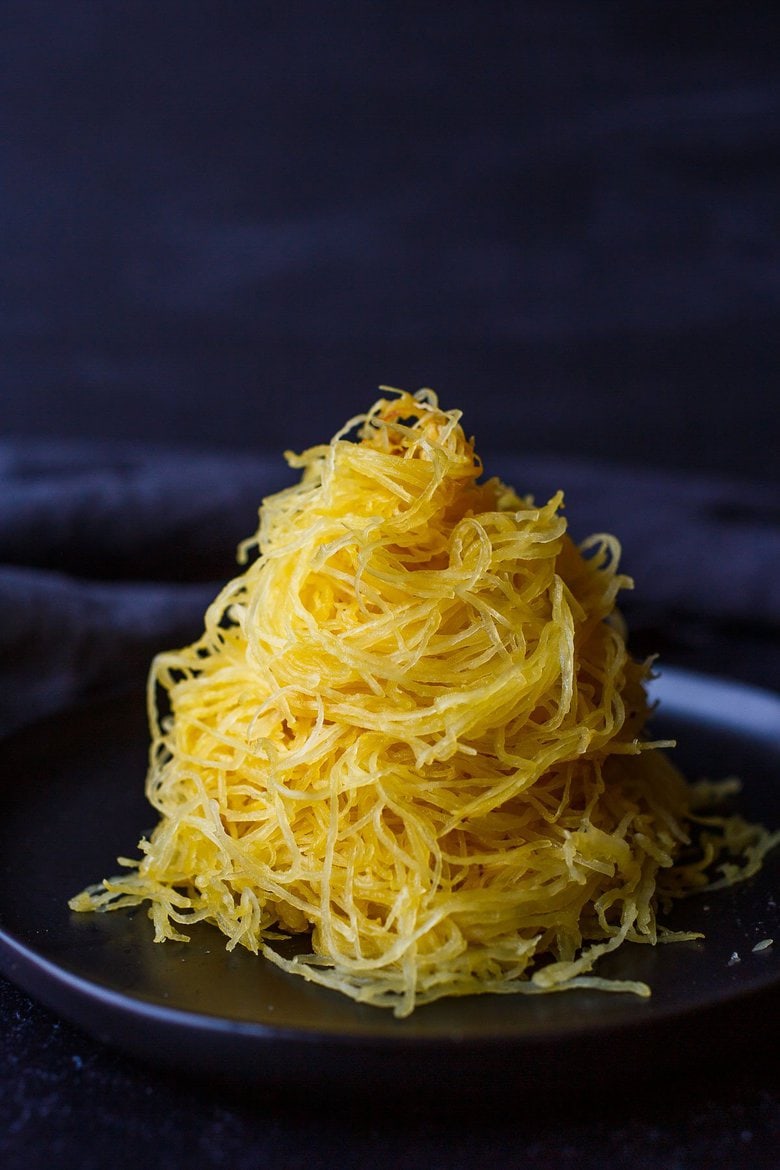
More Spaghetti Squash Recipes You’ll Like
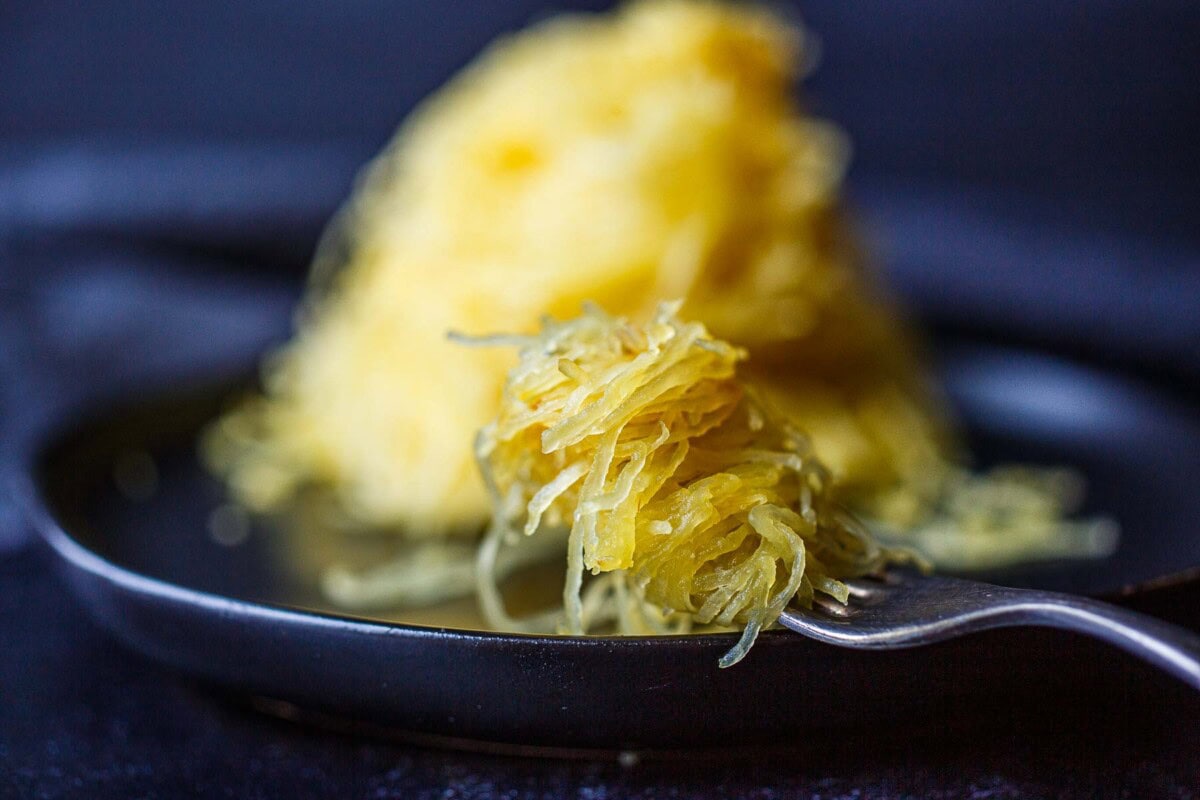
After you try this Spaghetti Squash recipe, let us know how it turns out in the comments below. Your review will help other readers, too! Sign up here to join our community and receive our latest recipes and weekly newsletter! xoxo Tonia
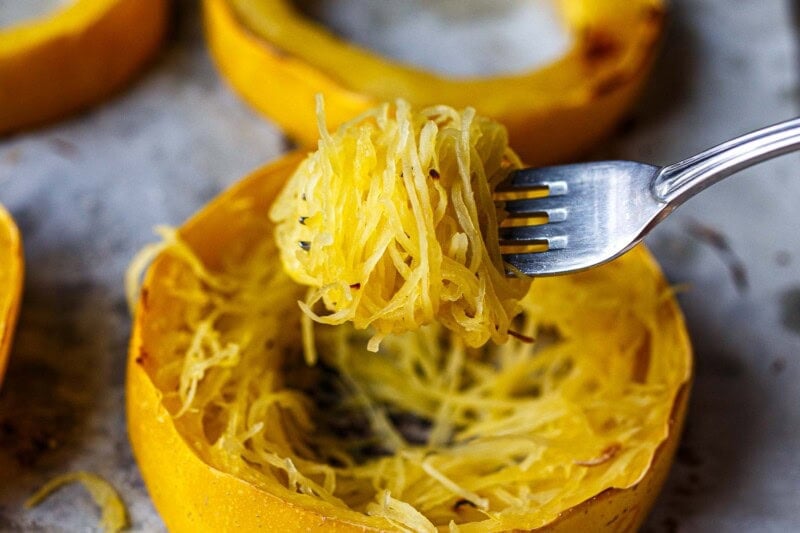
How to Cook Spaghetti Squash
- Prep Time: 15 minutes
- Cook Time: 30 minutes
- Total Time: 45 minutes
- Yield: 3–4 cups cooked 1x
- Category: vegetables
- Method: Bake
- Cuisine: American
- Diet: Vegan
Description
This recipe for How to Cook Spaghetti Squash is a faster method for cooking Spaghetti Squash that yields long strands, making a perfect low-carb, healthy substitute for pasta. Versatile, highly nutritious, and easy to cook!
Instructions
- Preheat oven to 400 F.
- Cut into rings. Cut the spaghetti squash into 1 inch widthwise slices with a sharp chef’s knife. (If your knife is not wanting to go through the shell, make a few small incisions with a paring knife in a circle around the exterior of the squash shell, then with a chef’s knife follow the knife nicks. This will make it easier to break through the shell and cut a straight line.). Scoop out the seeds and inner strands with a spoon.
- Season and bake. Brush both sides of the squash rings with olive oil and sprinkle with salt and pepper. Layout on a baking sheet with parchment paper. Place in the oven for 15 minutes. Flip the squash rings over and bake for 15 minutes more. Or until softened enough to fork apart.
- Fluff. While still on the tray, pick the squash with a fork, separating the strands out from the peel.
Notes
Refrigerate cooked spaghetti squash up to 4 days.
Freeze in an airtight container up to 6 months.
Nutrition
- Serving Size:
- Calories: 51
- Sugar: 2.8 g
- Sodium: 90.9 mg
- Fat: 2.9 g
- Saturated Fat: 0.5 g
- Carbohydrates: 7 g
- Fiber: 1.5 g
- Protein: 0.6 g
- Cholesterol: 0 mg
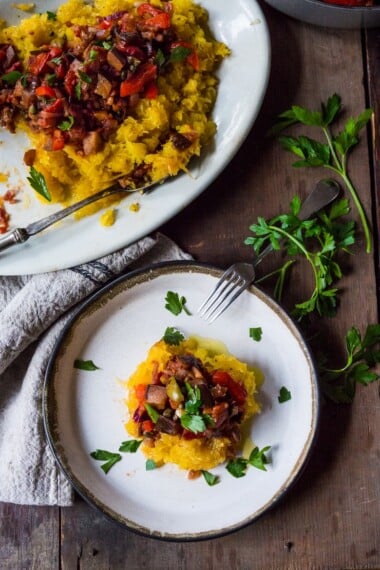
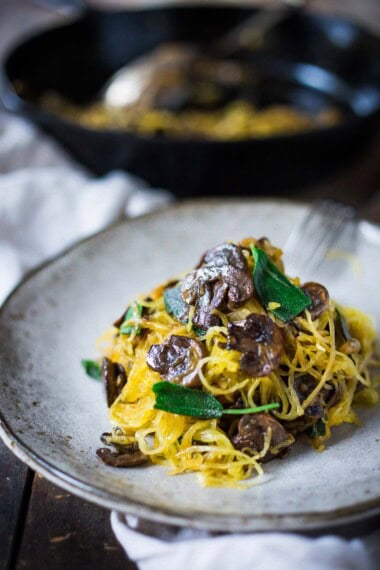
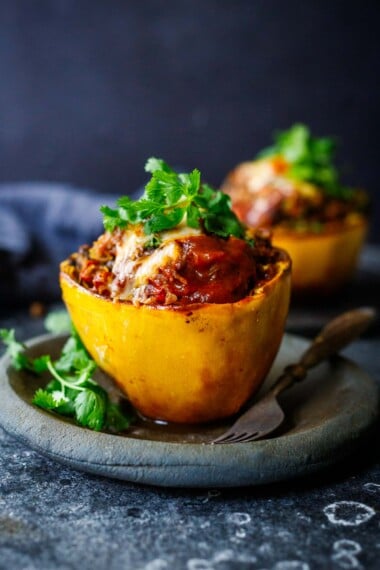
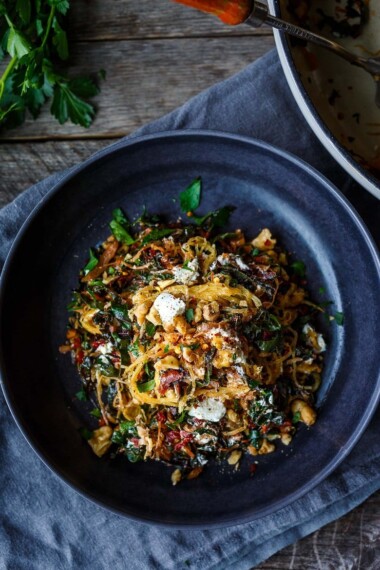

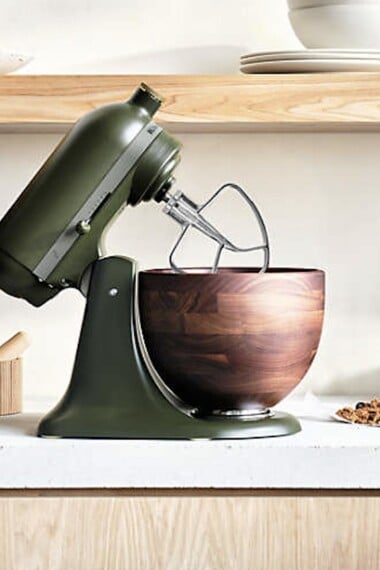
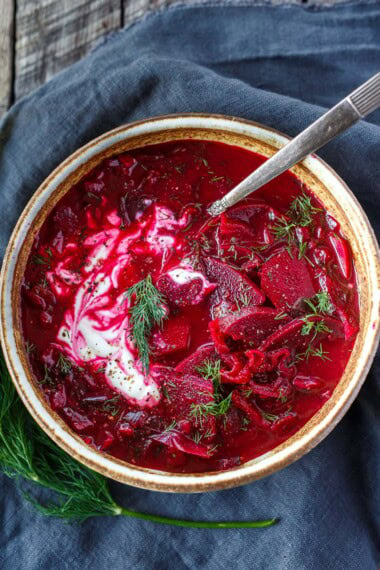





Great idea,
I’m going to pick up a spaghetti Squash at the corner produce mkt.
Can’t wait to cook it this way. Genius. Way easier than the way I always cook it. Thanks . Shannon
Let us know how it goes. 🙂
I had to add time to bake in the oven. At least 30 minutes per side. It still came out a little watery. I think my oven does not get hot enough.
Shoot Michelle, yes, I would check your oven temp is accurate – do you have an oven thermometer? Or do you have “convection” setting? that might help too.
ABSOUTELY DELISH!!!
Great!
I find simply throwing the entire squash (any squash) directly into the hot oven, on a cooking tray, is the easiest way to not cut my fingers trying to get through tough skins. The squash is moist, and easily separates from the seeds and skin. I suppose if you’re looking for drier spaghetti squash, this may not be the best method for that! 🙂
I hear you Deb. This is a great option for cooking the spaghetti squash much faster and surprisingly this method is not dry at all!
This is a revelation. I always got wet strands when I cooked it the usual way—meaning my squash left a drippy residue in whatever dish I was making. Very unappetizing. This produced fluffy, dry, perfectly textured strands. But my 1-inch rings took 30 minutes, not 15. Thanks for the insider technique!
So glad you learned something new! I will note the recipe on the time-the squash will cook differently depending on how fresh, how it was grown etc.
Any thoughts / suggestions about throwing the circled spaghetti squash on a Blackstone grill?
I like the idea and think it’s worth a try. Grease grill and squash well. Please let us know how it turns out.:)
Cooks quicker than just cutting the squash in half and strands of the squash are prettier.
So much easier, and faster, than cooking the squash in halves. Thank you for posting such a great time-saver!
Great to hear Janet!
I’m not gonna lie, cutting through the tough shell was challenging but your suggestion was helpful. The results were supreme and my family loved the squash in place of pasta. We paired it with my husband’s marinara. Voila! Dinner was served.
Great to hear Anna!
My husband suggested I try using my electric knife to cut through the tough shell. Worked like a charm. Had 2 cut into rings in no time and already in the oven!
OH Brilliant!
Why didn’t I think of this? 🙂 Much faster! Hoping for spaghetti squash from Farmer’s Market tomorrow.
Ha! I totally agree, what took me so long? Let us know how it goes.
This is a great tip! I love spaghetti squash and will cook it more often with your suggestions here. Thank you!
Great Robin! Let us know what you think.
I’m excited to try this method as I eat a lot of spaghetti squash — usually covered with your Carrot Miso Sauce (which is divine) and roasted vegetables.
Excited to hear what you think Robin!